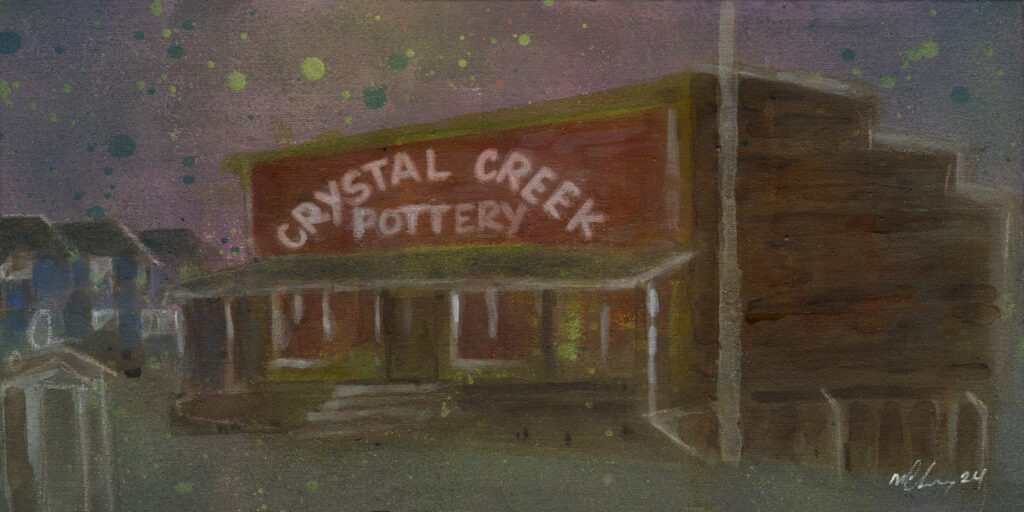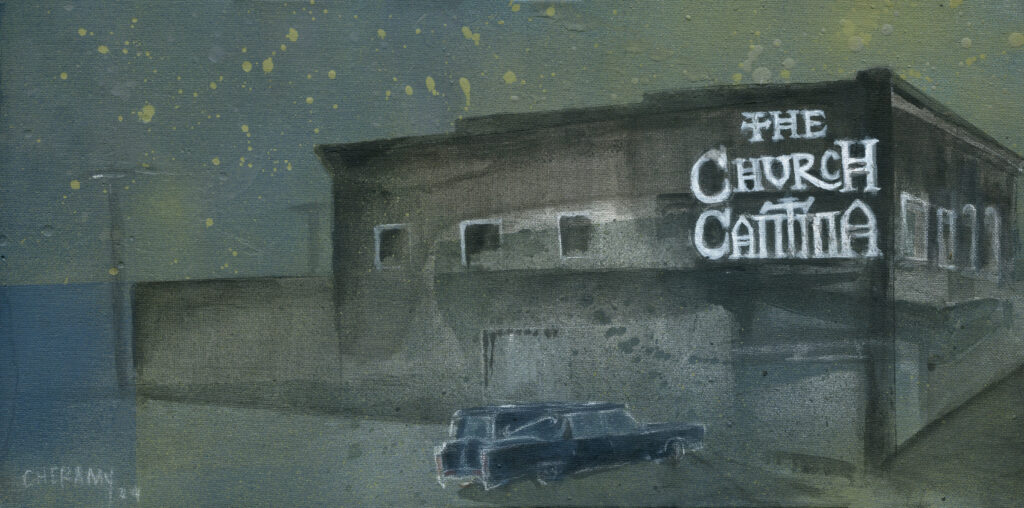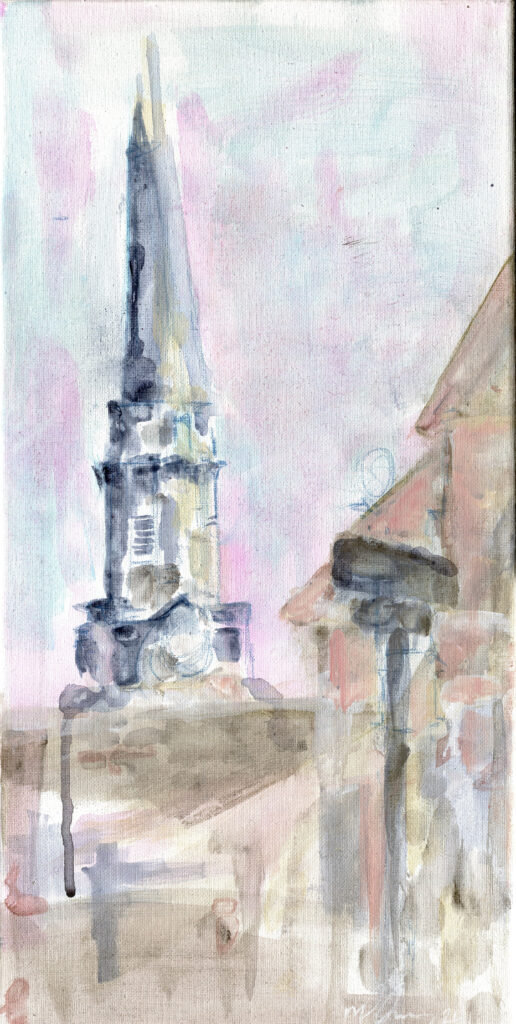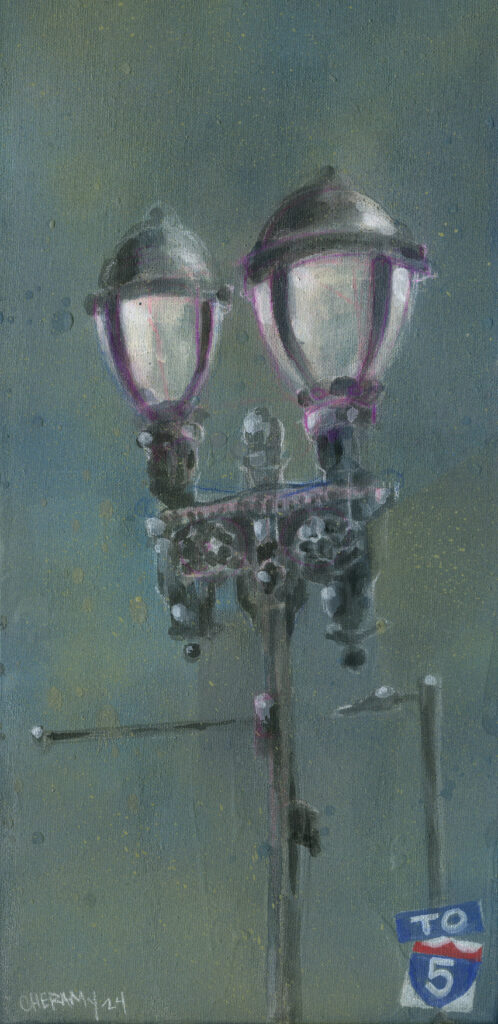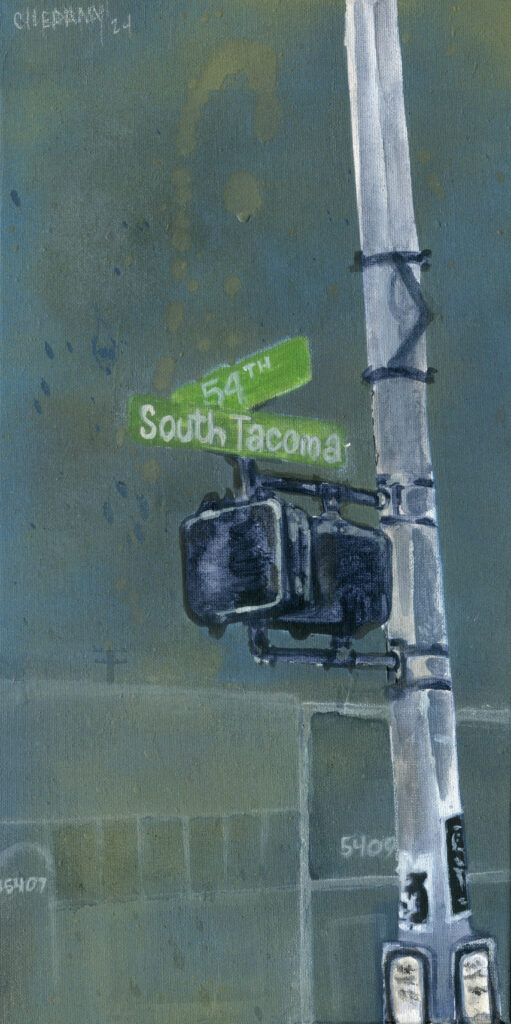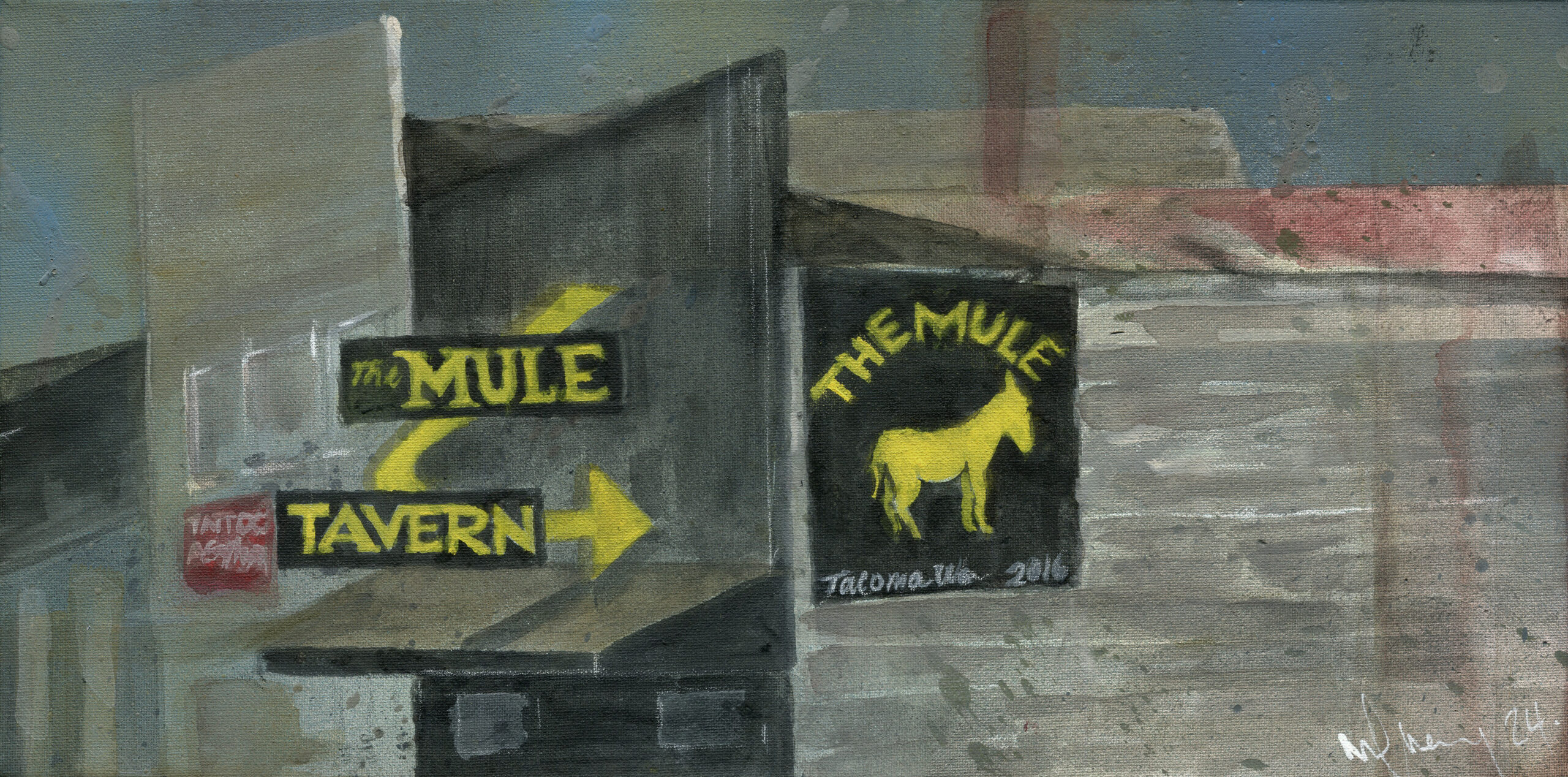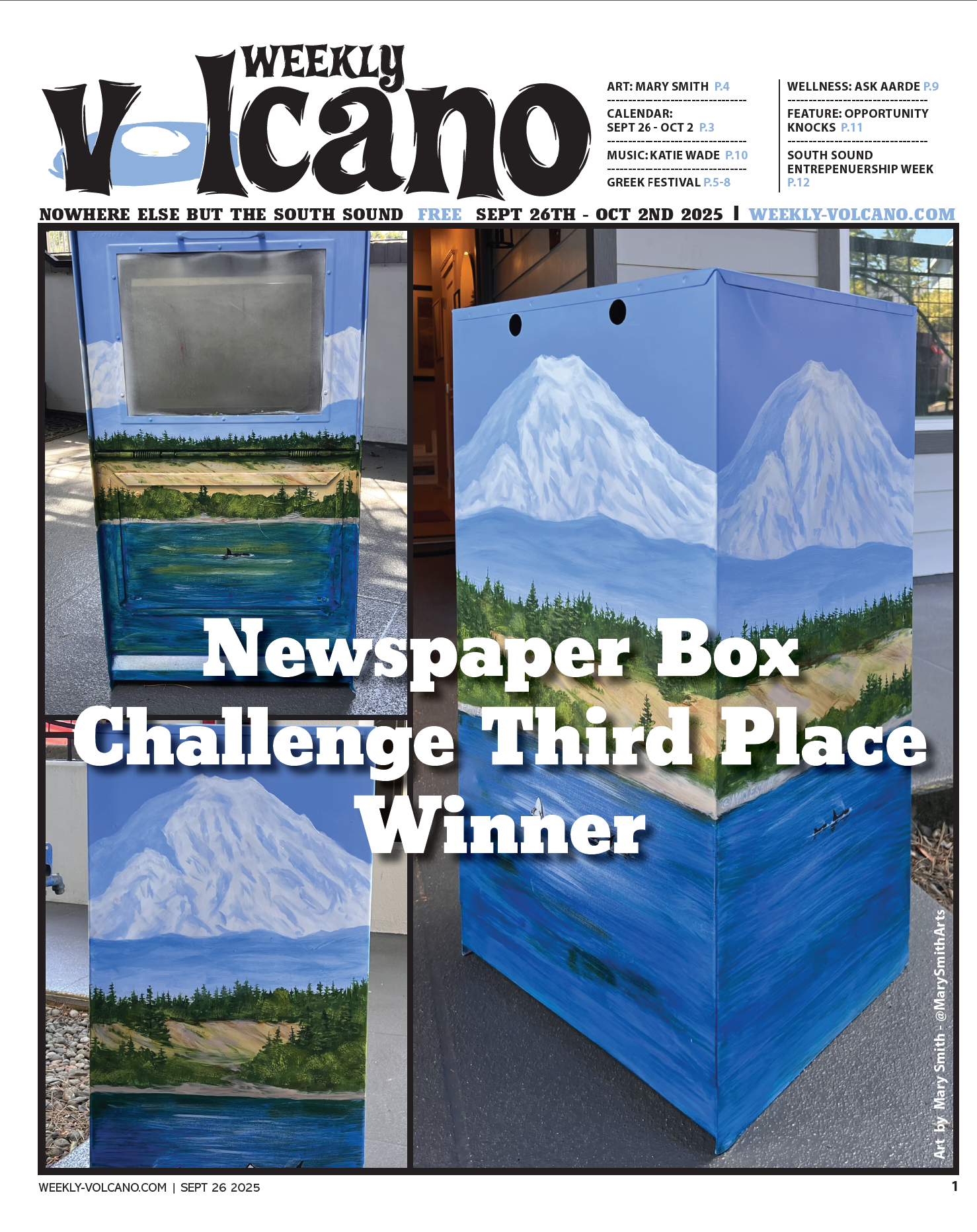BY SUZY STUMP for WEEKLY VOLCANO 6/6/25 |
“Are you painting a miracle?” That’s what a three-year-old child asked one day as he stood watching Matthew Cheramy paint a mural in Sonoma County. It was one of those moments you never forget. Was he painting a miracle? Perhaps he was.
Before he ever touched a professional canvas, Matthew watched his mother Charlotte paint porcelain in the garage. She was an oil painter turned china artist, who transformed their home into a makeshift studio using a pool table as her work surface. She handed him a brush when he was just five or six. “Watching her paint was amazing to me on so many formative levels,” he remembers. “She was the first person to walk me through her techniques.”
That early spark would go dormant for a while, until college lit it again. It was during a student show at a restaurant venue—a few poppies and peppers on the walls—when a professor asked, “What are these pieces about?” I realized the narrative I was trying to share wasn’t coming through without me speaking,” he says. That realization shifted everything. His next series featured displaced children affected by the atrocities in Central Africa in the late ’90s. For the first time, he didn’t have to explain the story. “My narrative was spoken through my work,” he says. “That’s when truly becoming an artist became my life’s narrative.”
And what a narrative it’s been. One that winds through Tacoma neighborhoods and deep into themes of local pride. “Tacoma is a proud city,” he says. “Living here has allowed me to get out of my comfort zone. The people, the grit, the love—it’s all become part of my inspirational palette.”
That local love runs through his Vantage Point Series—a concept born while painting South Tacoma Way and its storefronts (pictured here and on the cover). He’s since brought this concept to the Narrows Marina and is now working on intersections like 6th and Oakes, and North 8th and Fife.
That sense of intentionality carries through to his mixed media work. His creative process is fluid and tactile: backgrounds are built with spray paint and enamel, then layered with acrylics, oils, and pencils. His gouache and watercolor pieces start with archival rag mat board, focused on transparency, subtlety, and emotional resonance. “I paint in a somewhat raw and less filtered style,” he says. “I’m working in rich yet muted tones—the final construct I’m striving for.”
One piece in particular stands apart. Titled Taking Back My Power, it began as a watercolor and gouache portrait, small and contained. He painted it larger—twice—on 30-by-40-inch canvases: one in cool tones, the other warm. Then he sliced them apart and wove them back together.
The story behind it is painful and personal. A previous piece had been deliberately destroyed by people trying to hurt him. “It worked—until this piece,” he says. “This time, I was the one cutting my work up and creating something of beauty from that pain.” He calls it dangerous and empowering. A breakthrough that changed him not just artistically, but spiritually.
Themes of love and solitude surface again and again in his work. They’re recurring not for branding or to be trendy, but because they’re honest. “The love part is easy,” he says. “The solitude—not so much.”
It’s no surprise, then, that artist Edward Hopper looms large as a current influence. His quiet domestic scenes, all hush and tension, reflect something he’s leaning into—this regionalist shift toward grounded storytelling. And yet, he dreams big. “I’d love to create a monumental public sculpture that uses solar eclipses in color forms and the curvature of the earth relationships,” he says. “Something that reflects both science and spirit.”
For now he’s measuring canvas with tape measures, cutting, weaving, painting, observing and listening. When asked how he wants people to feel when they see his work, his answer is simple: “I want the viewer to feel their own emotions. When they’re emotionally present and connected—I feel accomplished.”
And when a child sees you working and reads the situation as witnessing someone painting a miracle, you know you’ve already succeeded. See more on Instagram @eyeloveart33.
